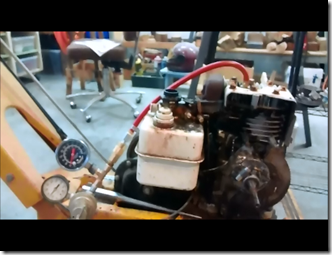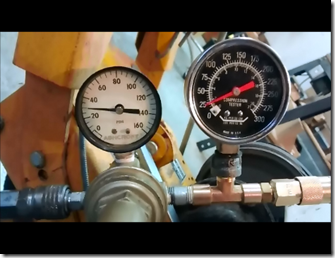There may be snow on the ground and it may be –30C out there but don’t let that fool you, gardening season is not that far away. And if the calendar wasn’t a good enough indicator the almost daily arrival of seeds, plant catalogues, and various and sundry gardening magazines provides proof positive that we’ll soon be working in the dirt again.
And so it is time to get the garden tiller working. It was always really hard to start, and then, right in the middle of the fall clean-up, it quit. I couldn’t get it running again so into the shed it went, another problem to be dealt with “some day”. Bought well used for a song 7 or 8 years ago it doesn’t owe me a dime, but I’m loathe to throw anything out if it can be fixed. I also love tearing stuff apart just to see how it works. (And sometimes I can even get it back together again.)
At the very least I expected an ignition problem and that the coil was going bad. Soon enough that was confirmed but before spending any money on replacement electrical parts I wanted to make sure the engine itself was in reasonable condition. Enter my brand new leak down tester.

 With everything hooked up and pressure being applied at 30 psi, the pressure drop was about 5 psi, or about 16% - 18%. Since the test was done on a cold engine (should really be at operating temperature) the leakage measured will be somewhat higher due to the greater cold clearances in these small air-cooled engines. So let’s call it 15%. Is that good or bad? General guidelines are that a brand new engine might read anything from 5% to 10%, over 20% shows significant wear on some internal parts (likely valves or rings), and over 30% means you’re probably looking at a complete rebuild. So I’m quite happy and satisfied that there are no major surprises inside the chamber that will keep this engine from providing a few more seasons of good service once the electrical issues are remedied.
With everything hooked up and pressure being applied at 30 psi, the pressure drop was about 5 psi, or about 16% - 18%. Since the test was done on a cold engine (should really be at operating temperature) the leakage measured will be somewhat higher due to the greater cold clearances in these small air-cooled engines. So let’s call it 15%. Is that good or bad? General guidelines are that a brand new engine might read anything from 5% to 10%, over 20% shows significant wear on some internal parts (likely valves or rings), and over 30% means you’re probably looking at a complete rebuild. So I’m quite happy and satisfied that there are no major surprises inside the chamber that will keep this engine from providing a few more seasons of good service once the electrical issues are remedied.
The tester did its job, and I can see it getting a LOT of use from now on.